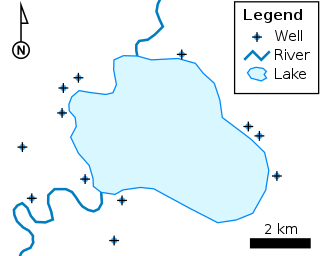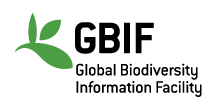Related Research Articles
The Semantic Web, sometimes known as Web 3.0, is an extension of the World Wide Web through standards set by the World Wide Web Consortium (W3C). The goal of the Semantic Web is to make Internet data machine-readable.

Extensible Markup Language (XML) is a markup language and file format for storing, transmitting, and reconstructing arbitrary data. It defines a set of rules for encoding documents in a format that is both human-readable and machine-readable. The World Wide Web Consortium's XML 1.0 Specification of 1998 and several other related specifications—all of them free open standards—define XML.
XSD, a recommendation of the World Wide Web Consortium (W3C), specifies how to formally describe the elements in an Extensible Markup Language (XML) document. It can be used by programmers to verify each piece of item content in a document, to assure it adheres to the description of the element it is placed in.

The Geography Markup Language (GML) is the XML grammar defined by the Open Geospatial Consortium (OGC) to express geographical features. GML serves as a modeling language for geographic systems as well as an open interchange format for geographic transactions on the Internet. Key to GML's utility is its ability to integrate all forms of geographic information, including not only conventional "vector" or discrete objects, but coverages and sensor data.

XBRL is a freely available and global framework for exchanging business information. XBRL allows the expression of semantic meaning commonly required in business reporting. The standard was originally based on XML, but now additionally supports reports in JSON and CSV formats, as well as the original XML-based syntax. XBRL is also increasingly used in its Inline XBRL variant, which embeds XBRL tags into an HTML document. One common use of XBRL is the exchange of financial information, such as in a company's annual financial report. The XBRL standard is developed and published by XBRL International, Inc. (XII).
Biodiversity Information Standards (TDWG), originally called the Taxonomic Databases Working Group, is a non-profit scientific and educational association that works to develop open standards for the exchange of biodiversity data, facilitating biodiversity informatics. It is affiliated with the International Union of Biological Sciences. It is best known for the Darwin Core standard for exchanging biodiversity, which has been used by the Global Biodiversity Information Facility to collect millions of biological observations from museums and other organizations from around the world.

The Global Biodiversity Information Facility (GBIF) is an international organisation that focuses on making scientific data on biodiversity available via the Internet using web services. The data are provided by many institutions from around the world; GBIF's information architecture makes these data accessible and searchable through a single portal. Data available through the GBIF portal are primarily distribution data on plants, animals, fungi, and microbes for the world, and scientific names data.
Catalogue Service for the Web (CSW), sometimes seen as Catalogue Service - Web, is a standard for exposing a catalogue of geospatial records in XML on the Internet (over HTTP). The catalogue is made up of records that describe geospatial data (e.g. KML), geospatial services (e.g. WMS), and related resources.
RDFa or Resource Description Framework in Attributes is a W3C Recommendation that adds a set of attribute-level extensions to HTML, XHTML and various XML-based document types for embedding rich metadata within Web documents. The Resource Description Framework (RDF) data-model mapping enables its use for embedding RDF subject-predicate-object expressions within XHTML documents. It also enables the extraction of RDF model triples by compliant user agents.
Life Science Identifiers are a way to name and locate pieces of information on the web. Essentially, an LSID is a unique identifier for some data, and the LSID protocol specifies a standard way to locate the data. They are a little like DOIs used by many publishers.
Biodiversity informatics is the application of informatics techniques to biodiversity information, such as taxonomy, biogeography or ecology. It is defined as the application of Information technology technologies to management, algorithmic exploration, analysis and interpretation of primary data regarding life, particularly at the species level organization. Modern computer techniques can yield new ways to view and analyze existing information, as well as predict future situations. Biodiversity informatics is a term that was only coined around 1992 but with rapidly increasing data sets has become useful in numerous studies and applications, such as the construction of taxonomic databases or geographic information systems. Biodiversity informatics contrasts with "bioinformatics", which is often used synonymously with the computerized handling of data in the specialized area of molecular biology.
The Open Packaging Conventions (OPC) is a container-file technology initially created by Microsoft to store a combination of XML and non-XML files that together form a single entity such as an Open XML Paper Specification (OpenXPS) document. OPC-based file formats combine the advantages of leaving the independent file entities embedded in the document intact and resulting in much smaller files compared to normal use of XML.
Darwin Core is an extension of Dublin Core for biodiversity informatics. It is meant to provide a stable standard reference for sharing information on biological diversity (biodiversity). The terms described in this standard are a part of a larger set of vocabularies and technical specifications under development and maintained by Biodiversity Information Standards (TDWG).
A metadata standard is a requirement which is intended to establish a common understanding of the meaning or semantics of the data, to ensure correct and proper use and interpretation of the data by its owners and users. To achieve this common understanding, a number of characteristics, or attributes of the data have to be defined, also known as metadata.
A taxonomic database is a database created to hold information on biological taxa – for example groups of organisms organized by species name or other taxonomic identifier – for efficient data management and information retrieval. Taxonomic databases are routinely used for the automated construction of biological checklists such as floras and faunas, both for print publication and online; to underpin the operation of web-based species information systems; as a part of biological collection management ; as well as providing, in some cases, the taxon management component of broader science or biology information systems. They are also a fundamental contribution to the discipline of biodiversity informatics.
Microdata is a WHATWG HTML specification used to nest metadata within existing content on web pages. Search engines, web crawlers, and browsers can extract and process Microdata from a web page and use it to provide a richer browsing experience for users. Search engines benefit greatly from direct access to this structured data because it allows them to understand the information on web pages and provide more relevant results to users. Microdata uses a supporting vocabulary to describe an item and name-value pairs to assign values to its properties. Microdata is an attempt to provide a simpler way of annotating HTML elements with machine-readable tags than the similar approaches of using RDFa and microformats.
Darwin Core Archive (DwC-A) is a biodiversity informatics data standard that makes use of the Darwin Core terms to produce a single, self-contained dataset for species occurrence, checklist, sampling event or material sample data. Essentially it is a set of text (CSV) files with a simple descriptor (meta.xml) to inform others how your files are organized. The format is defined in the Darwin Core Text Guidelines. It is the preferred format for publishing data to the GBIF network.
Schema.org is a reference website that publishes documentation and guidelines for using structured data mark-up on web-pages. Its main objective is to standardize HTML tags to be used by webmasters for creating rich results about a certain topic of interest. It is a part of the semantic web project, which aims to make document mark-up codes more readable and meaningful to both humans and machines.
Plinian Core is a set of vocabulary terms that can be used to describe different aspects of biological species information. Under "biological species Information" all kinds of properties or traits related to taxa—biological and non-biological—are included. Thus, for instance, terms pertaining descriptions, legal aspects, conservation, management, demographics, nomenclature, or related resources are incorporated.
References
- ↑ "EFG Schema" (PDF). Archived from the original (PDF) on April 2, 2012. Retrieved 8 September 2011.
- ↑ "ABCDDNA : DNA extension for Access to Biological Collection Data". Biodiversity Information Standards (TDWG) . Retrieved 30 August 2013.